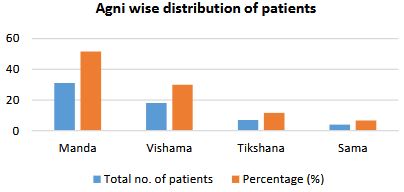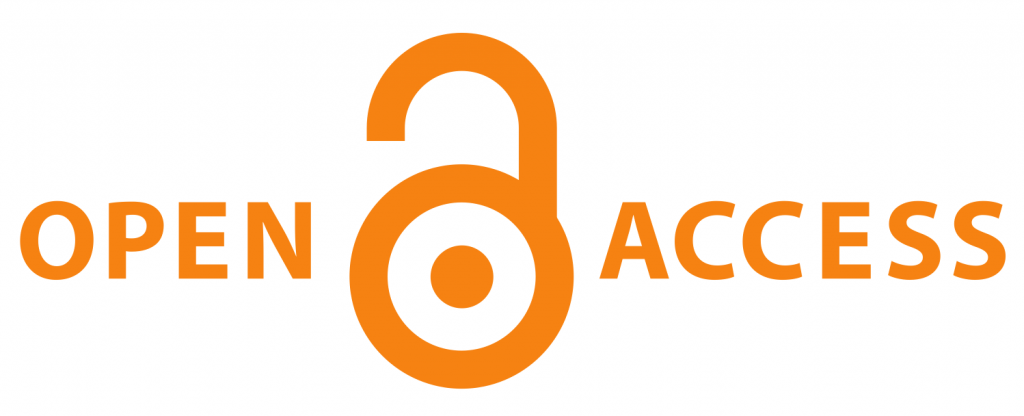Studies on genesis of Prameha from Amajirna w.s.r. to biochemical parameters
DOI:
https://doi.org/10.21760/jaims.9.11.10Keywords:
Prameha, Amajirna, Musta, PippaliAbstract
Background: In classical text it had been highlighted that Amajirna is root cause to produce Prameha. Musta is drug which combat Amajirna and it also effective to cure Prameha. So, this gives reasons for need of the present study and also reason for selection of topic. Aim: To evaluate the pathogenesis of Prameha from Amajirna and the efficacy of Musta (Cyperous rotundus) in both Amajirna and Prameha. Material and Methods: This study is an open label, randomized, interventional, comparative, prospective, controlled clinical trial. In the present study the patient of Prameha were enrolled following the subjective criteria of Prameha. A total of 60 patients of Prameha were selected from the OPD and IPD of Shyamadas Vaidya Shastra Pith Hospital, Kolkata, West Bengal, and randomly allocated with a computerized randomization method into two groups. Those selected patients were subjected for a confirmatory biochemical analysis of FBS and PPBS. The prediabetic person was interrogated for Amajirna as a past history or present illness, by the subjective criteria of Amajirna. In group A (n= 30), Musta Churna was given for 90 days and in group B (n= 30), Pippali Churna was given for 90 days. Before treatment and after treatment data FBS, PPBS, HBA1C, SGOT, SGPT, serum amylase, serum lipase and alkaline phosphatase enzyme levels were recorded for statistical analysis. This record of assessment was taken at 0, 30, 60 and 90 days. Wilcoxon signed rank test; unpaired t-test were applied. Result: Both groups showed statistically significant (p<0.05) improvement in chief complaints of Prameha, Amajirna, FBS, PPBS, HBA1C, SGOT, SGPT, serum amylase, serum lipase and alkaline phosphatase. Conclusion: On percentage wise comparison, better relief was found in Group-A i.e., Musta Churna was found to be more effective in all the subjective and objective parameters than Group-B (Pippali Churna).
Downloads
References
Dr. Ram Karan Sharma, Vaidya Bhagwan Dash. Agnivesa’s Charaka Samhita Text with English translation & critical exposition based on chakrapani dutta Ayurveda dipika, Chowkhamba Sanskrit Series office. Varanasi, Vol-3, edition reprint-2014, chapter-6, Shloka no 51 to 54, page no 13-14.
API Textbook of Medicine edited by Siddharth N. Shah, Publised by THE Association of Physicians of India, 7th edi., revised reprint 2006.
Dr. Ram Karan Sharma, Vaidya Bhagwan Dash. Agnivesa’s Charaka Samhita, Text with English translation & critical exposition based on chakrapani dutta Ayurveda dipika, Chowkhamba Sanskrit Series office, Varanasi, Vol -2 edn reprint-2013, Chap- 8 shloka- 16,17page no. 105
Acharya Shri yadyunandan Upadhyay, shri vijyarakshit, madhav nidanam madhukosh vyakhya, Chowkhamba Sanskrit Series office, Varanasi, Vol - 1, edn- reprint- 2019 chp 6 , Shloka 8 page no. 227
Dr. Ram Karan Sharma, Vaidya Bhagwan Dash. Agnivesa’s Charaka Samhita, Text with English translation & critical exposition based on chakrapani dutta Ayurveda dipika, Chowkhamba Sanskrit Series office, Varanasi, Vol -4, edn reprint-2014, Chap- 15 shloka- 47page no. 2
Acharya Shri yadyunandan Upadhyay, shri vijyarakshit, madhav nidanam madhukosh vyakhya , Chowkhamba Sanskrit Series office, Varanasi, Vol - 1, edn- reprint- 2019 chp 6 , Shloka 5 page no. 223
Dr. R am Karan Sharma, Vaidya Bhagwan Dash. Agnivesa’s Charaka Samhita, Text with English translation & critical exposition based on chakrapani dutta Ayurveda dipika Chowkhamba Sanskrit Series office. Varanasi, Vol-2, edn reprint-2013, chap- 4 Shloka no -6 page no - 54
Shushruta samhita, part-1 edited by Ambikadata Shastri,Chaukhamba Sanskrit Sansthana, Varanasi,reprinted 2006, Sutrasthana 46/506, pg no. 287.
Shushruta samhita, part-1 edited by Ambikadata Shastri,Chaukhamba Sanskrit Sansthana, Varanasi,reprinted 2006, Sutrasthana 46/509-510, pg no. 287.
Charaka Samhita edited by Vaidya Yadavaji Trikamji Acharya Chaukhambha Surbharati Prakashana, Varanasi, 2008, Nidanasthana 4/4-5.
Charaka Samhita edited by Vaidya Yadavaji Trikamji Acharya Chaukhambha Surbharati Prakashana, Varanasi, 2008, Chikitsasthana 15/45-49.
Charaka Samhita edited by Vaidya Yadavaji Trikamji Acharya Chaukhambha Surbharati Prakashana, Varanasi, 2008, Sutrasthana 28/31-32.
Dr. Ram Karan Sharma, Vaidya Bhagwan Dash. Agnivesa’s Charaka Samhita, Text with English translation & critical exposition based on chakrapani dutta Ayurveda dipika Chowkhamba Sanskrit Series office. Varanasi, Vol-3, edn reprint- 2014, chap- 6, Shloka no -26, page no - 306
Dr. Ram Karan Sharma, Vaidya Bhagwan Dash. Agnivesa’s Charaka Samhita, Chowkhamba Sanskrit Series office. Varanasi, Vol-3, edn reprint 2014, chap 6, Sloka no 14, page no .303
Prof K.R srikantha Murthy, Rog viniscaya, madhav nidan, chowkhamba Sanskrit sansthan , varanasi, edn reprint 2011 , chp- 6 Shloka no. 10, page no. 30















